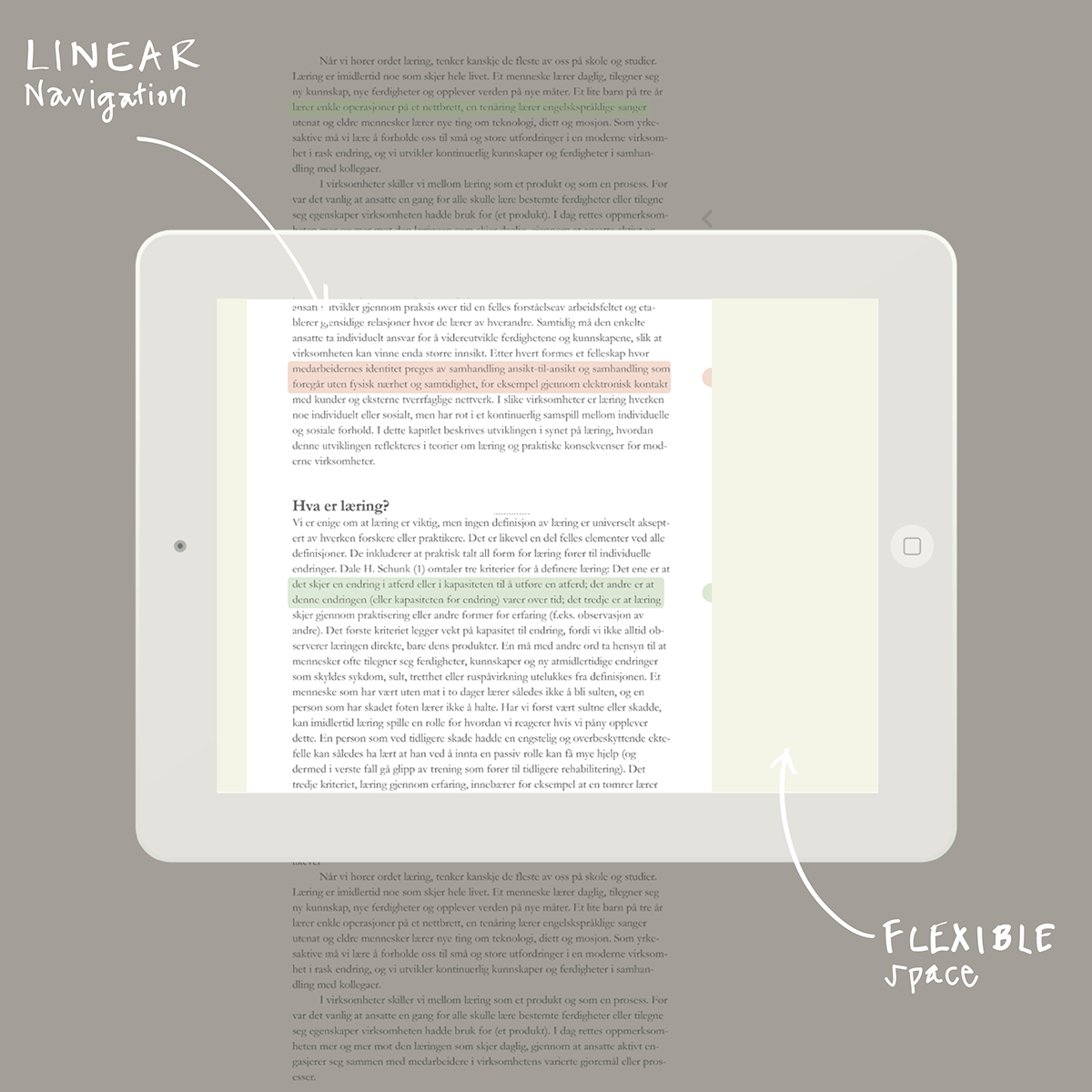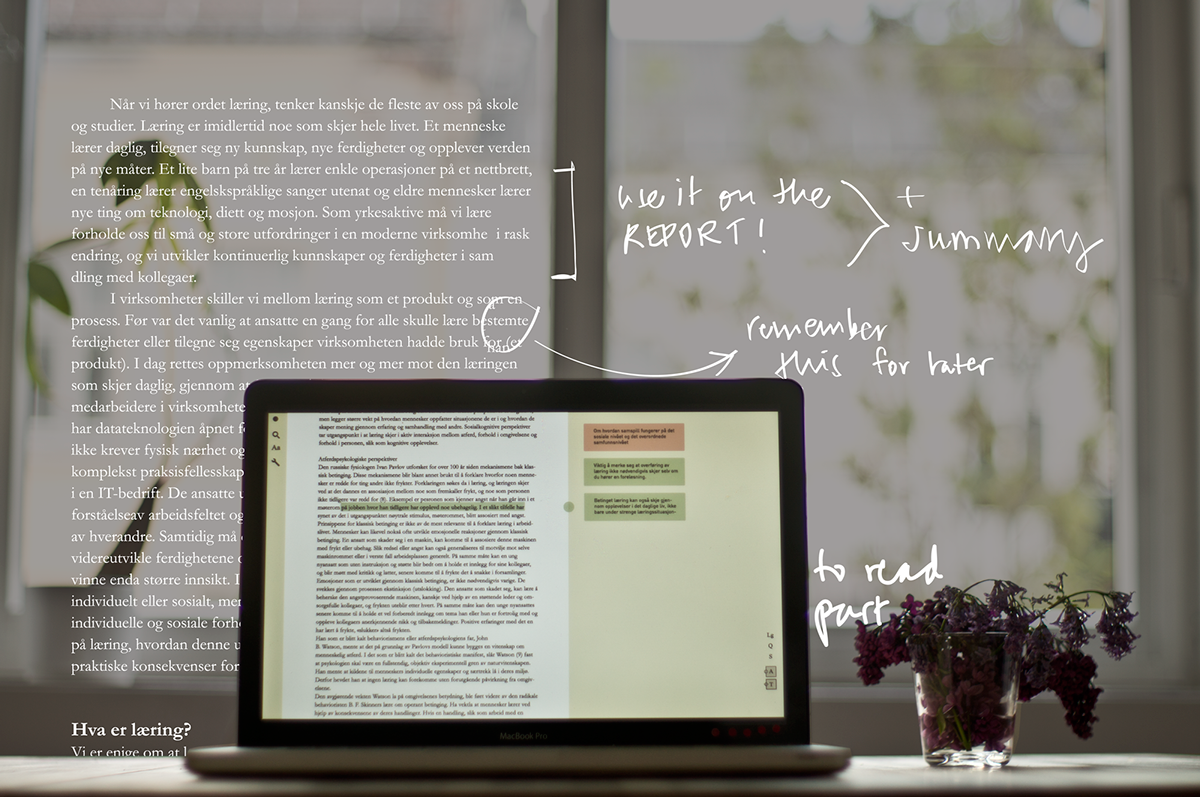This project was done together with Martin Holt Juliussen for the course of Interaction Design on Screens.
We worked in collaboration with Gyldendal, in making a digital version of a non-fictional book.
The book sits on the context of a course called “Organizational behaviour and management” ran at BI.
It is a general course for different disciplines, taught on the first year along with maths, statistics and finance.
As some students mentioned in interviews, this course is not a priority.
Our main objective with this project is to make the studenst understand the topic through this digital version, where “to understand” means being able to apply acquired knowledge in other situations; internalize and generalize it to be able to transfer the knowledge.

Through our insights phase we decided to focus on three main arguments:
. People have different study habits and structures for learning
. Being able to use and create content allows the student to better internalize information
. Students use different platforms for different purposes
One of the main differences between physical and digital platforms, is the way content is structured. Learning is usually done linearly, this same thing goes for books, where the structure is fixed and given.
Digital structures, in the other hand, allow to navigate in a more chaotic path.
We wanted to balance this two structures, giving people something they can relate to, but also allowing flexibility, using the possibilities of digital environments.
We divided the screen into:
. A fixed space with a linear structure. Here you find the book as we know it
. And a flexible space that can be what you need it to be.
So, what is the content of this structure?

We got one chapter of the book to work with.
In addition to the chapters content it also contains a summary, questions, learning goals and short defintions of terminology being used.
We took some parts out and left the “core linear content” of the chapter to be placed on the fixed space of the screen, and we took the added information and activities to be placed in the flexible space.
You can use the linear structure to navigate, and the flexible space will change to give you connected information, or you can use the flexible space to navigate the text in different ways. For example, using the defintions of the terminology: You can go through the book and get added definitions, or you can see, in your flexible space a list of the terminology and navigate the text to where a specific concept is more thoroughly defined.
Allowing this different ways of navigating the text, we open the structure for different study habits and learning structures.
You can also use the flexible space as a work space. Adding annotations, making summaries, etc. Which gives the possibility of creating content while using this book. Allowing for better internalization of the information.
Taking one step out of the reading experience, the book as a whole is structured considering each chapter a unit. This because of the possibility of Gyldendal selling chapters of the book individually.
Then, each chapter consist of a column of text, and different chapters will be placed one next to the other. As you read each chapter, you will live traces of your reading, you will start owning the structure and the new created content. This will allow you to start recognising chapters and create a map of the book as a whole.

We discussed about the idea of being able to share summaries with other people. Getting their references to guide you through the book, or being able to answer the chapter’s questions in your working space.
This possibilities are yet to be developed.






